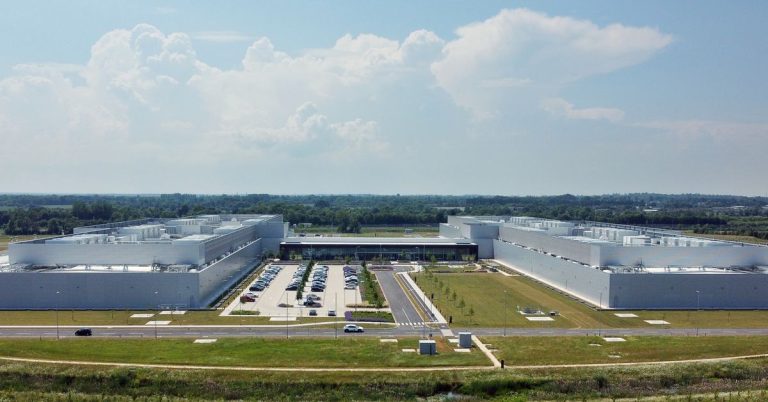Data centers could consume twice as much electricity by 2026, thanks in large part to cryptocurrencies and artificial intelligence, according to a new report from the International Energy Agency (IEA).
We rely on data centers to store all our emails, photos, cat videos, and everything else in the cloud. More and more data centers are springing up to mine Bitcoin and train AI.
This has already sparked a backlash over the environmental impact of cryptocurrencies and AI tools like ChatGPT, since all of these data centers are responsible for greenhouse gas emissions associated with their electricity use. The world will need more renewable energy to remove pollution from power grids and meet the growing electricity demand from data centers at the same time.
This growth is equivalent to adding the equivalent of electricity demand in another country
Data centres, cryptocurrencies and artificial intelligence accounted for about 2% of global electricity demand in 2022, using 460 terawatt hours of electricity, according to the International Energy Agency's annual electricity report released today. It is estimated that cryptocurrency mining alone accounts for nearly a quarter of electricity consumption, with 110 terawatt hours will be burned in 2022.
By 2026, electricity consumption from data centers – including those used in cryptocurrencies and artificial intelligence – could rise to 1,050 terawatt hours depending on the pace of technology development. This growth is equivalent to adding the equivalent of electricity demand in another country. Sweden under a more modest scenario or Germany at most.
The United States has the largest number of data centers today, with 33 percent of the world's approximately 8,000 data centers. It is also the country with the largest number of Bitcoin mining operations. The International Energy Agency expects a “rapid pace” of growth in electricity consumption in US data centers over the next two years, rising from about 4% of US demand in 2022 to 6% by 2026. 5G networks and services are expected to expand Cloud-based. Other drivers of this growth.
Ireland, which has one of the lowest corporate tax rates in the European Union, is expected to see a boom in new data centres. The 82 data centers already account for 17 percent of the country's electricity consumption in 2022. Another 54 centers are either under construction or recently approved to begin construction. By 2026, all of these data centers could be responsible for nearly a third of the country's annual electricity demand.
“The rapid expansion of the data center sector and growing demand for electricity could pose challenges to the electricity system,” the IEA report says. The danger is not limited to Ireland. In London, demand for electricity in data centers has made it more difficult to develop more housing. Texas, a hub for Bitcoin mining in the US, is having to contend with new cryptocurrency mines (AKA cryptocurrency data farms) adding pressure to its already aging and strained power grid.
Since data centers are essentially warehouses for computers, 40 percent of electricity demand comes from computing. Keeping all that equipment cool represents another 40 percent of the demand, while other IT equipment makes up the rest.
Adding AI to the mix increases the overall electricity demand in data centers. The IEA report says Google Search could use up to ten times as much electricity in a scenario that fully involves artificial intelligence. Likewise, it expects the AI industry to burn ten times more electricity in 2026 than last year.
Cryptocurrency electricity demand is expected to jump 40 percent by 2026. There have been some success stories with reducing the energy and environmental impacts of cryptocurrencies. Ethereum blockchain technology has been able to cut its electricity use by more than 99 percent by switching to a more energy-efficient method of validating new transaction blocks. However, the Bitcoin network has refused to follow suit and is responsible for the majority of carbon emissions generated by cryptocurrency mining.
Fortunately, the IEA also expects the growth of renewable energy to accelerate around the world, surpassing coal to generate more than a third of the world's electricity by 2025. This still does not solve all the challenges that new data centers bring. Arguably, improving energy efficiency is just as important – for example, by adopting highly efficient cooling systems – because significant growth in electricity demand could outpace the increase in renewable energy sources.

